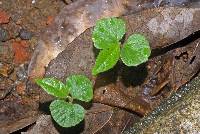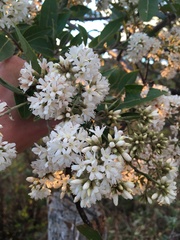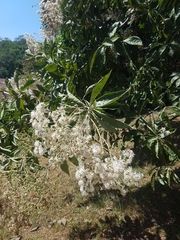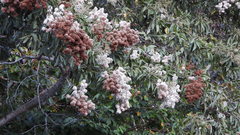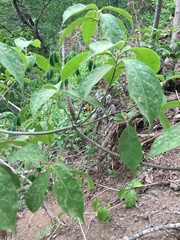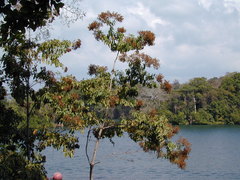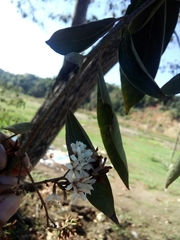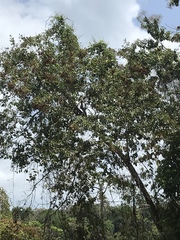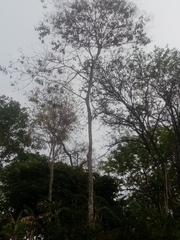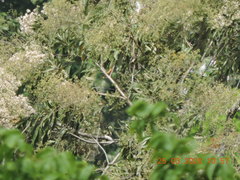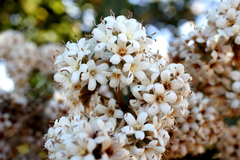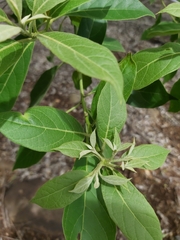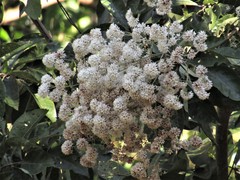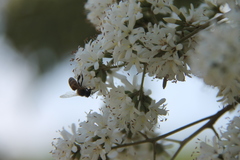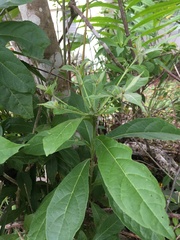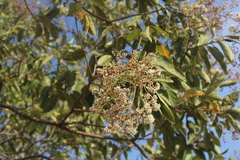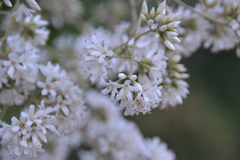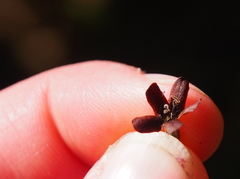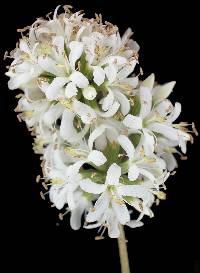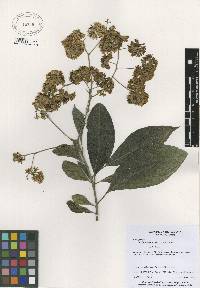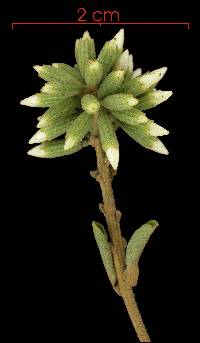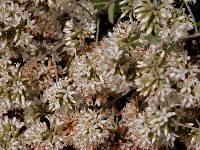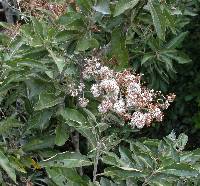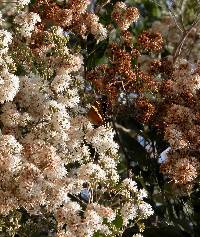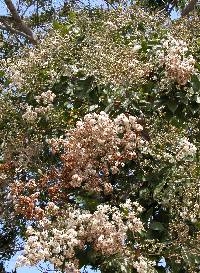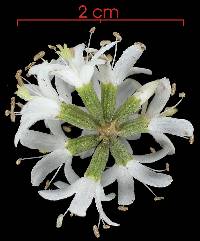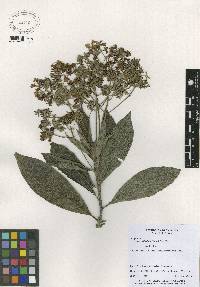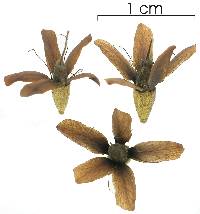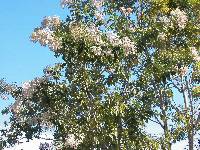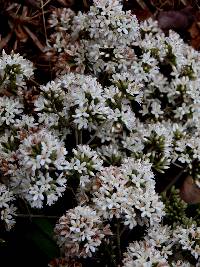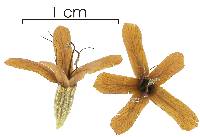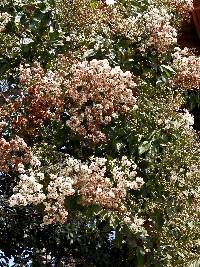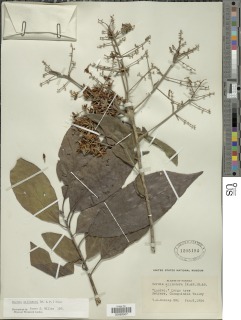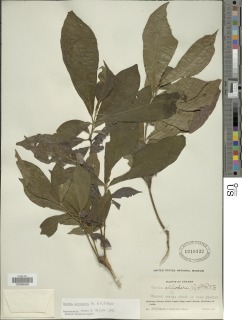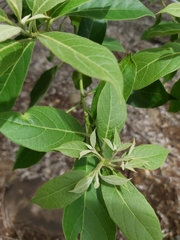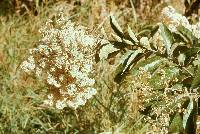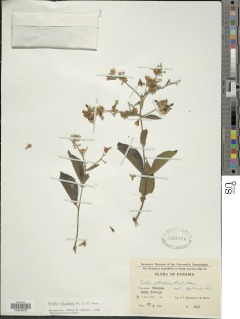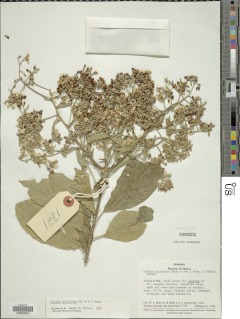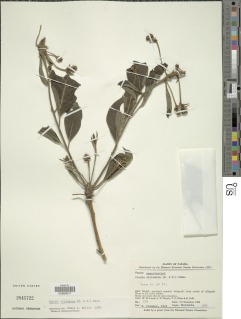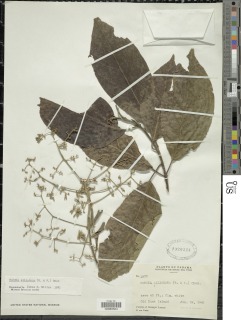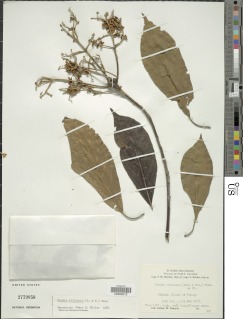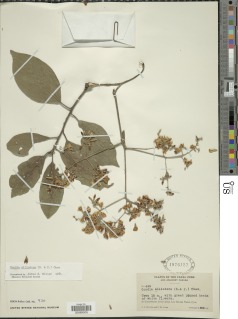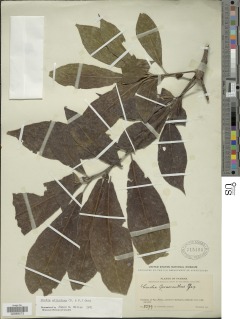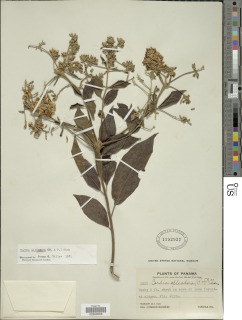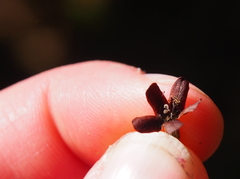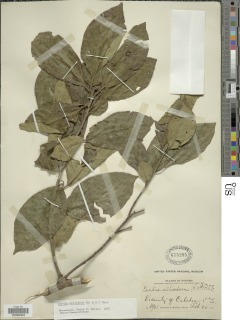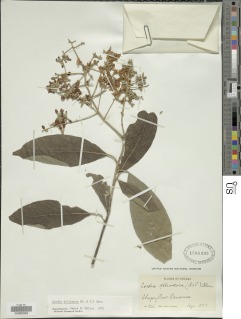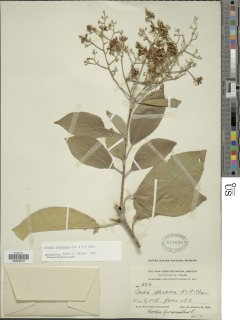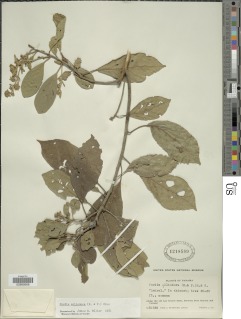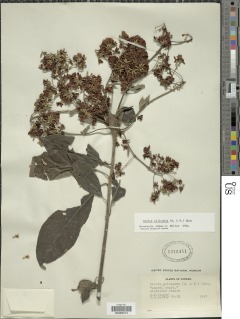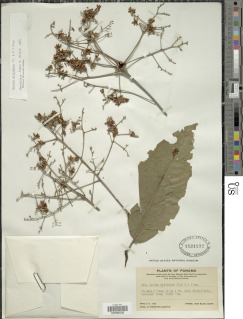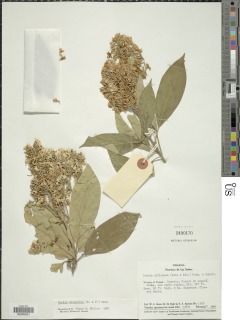

|
|
|
|
Family: Cordiaceae
Spanish-Elm, more... (es: capá, laurel)
|
Description: A small or medium-sized tree, seldom more than 40 or 50 cm in trunk diameter. The trunk is smooth and light colored, and nearly but never quite straight, but unbranched until the upper parts. Leaves are oval, alternate, bunched on branches. Twigs have numerous circular lenticels. Both leaves and petioles are asperous to the touch, with small hairs. Smaller plants are characterized by swellings along the stems where the branches exit; 3-4 branches exit from a single swelling (ants of the genus Azteca inhabit the swollen stem node). Branches are not straight where they exit, but rather arch upward. In larger trees, this same pattern persists, but is not always very clear. Crowns of larger trees are small, rounded, with irregular and arching branches. Reproduction: Flowers are produced in larger masses above the leaves in February. They are conspicuously bright white at this time, but they fade to a dull brownish color through March and into April, as they go to seed. Individual flowers are small, white, with green stripes. The small fruits have one seed, and are frequently eaten by pigeons. Foliage in the crown becomes very thin during April and May, and the trees are completely leafless for a period until July. Distribution: Common and widespread edge and roadside species, also fairly common in natural canopy openings in mature forest of Soberania and Barro Colorado. Not common on the Caribbean side, though. Very common along the Panama City-Gamboa road. Similar Species: This species takes awhile to learn well. The leaves are not at all distinctive, having a typical, plain shape and arrangement. Most important in smaller plants is the branching pattern and the swollen stem nodes. Larger trees are easily recognized during February and March, when they are covered in dense white flower clusters. Later, when the crown is leafless, it can be recognized, since no other common species are leafless at the same time, and by the small, dense crown of twisting branches. In the latter half of the wet season, when this species has leaves and no flowers, it takes a good deal of experience to learn to recognize it as an adult (when the swollen stem nodes are not evident). Three other species of Cordia in the area (eg, LK cordbi C. bicolor) LK2 have a different leaf pattern and are not confused with Cordia alliodora. Uses: Wood is good quality, easy to work, resistant to decay, frequently used in various kinds of construction. It is grown in plantations in both Central and South American, and seeds can be purchased from various forestry institution. Laurel is also widely used locally by campesinos for fence posts and carts. Descripción: Árbol de 5 a 25 m de alto. Copa pequeña. Tronco con ramificación verticilada. Corteza exterior blanca o gris, tornándose negra y fisurada en los árboles de mayor edad. Ramitas terminales con lenticelas blancas y abultamientos huecos habitados por hormigas del género Azteca. Hojas simples y alternas, de 7-18 x 3-8 cm, lanceoladas o elípticas, con ápice agudo, bordes enteros a ondulados y base obtusa o desigual. Las hojas son ásperas en el haz y con pelos estrellados por el envés. Pecíolo de 1-3 cm de largo, cubierto de pelos y áspero al tacto. Flores blancas y aromáticas. Frutos alados, con una sola semilla y corola persistente, de 0.5-0.7 cm de largo, verdes, tornándose marrón castaño al madurar. Datos Ecológicos: La especie crece a bajas y medianas elevaciones, en bosques secos, húmedos o muy húmedos de todo el país. Común en bosques secundarios secos de la vertiente del Pacífico en Panamá. Deja caer sus hojas alrededor de mayo y junio, pero las repone a partir de agosto. Florece y fructifica de diciembre a mayo. Las flores son visitadas por abejas y mariposas. Los frutos forman parte de la dieta de aves de la familia Columbidae. Es común observar plantas parásitas del género Phoradendron (Viscaceae) creciendo sobre las ramas del laurel, lo cual puede ocasionarle daños a largo plazo. Especies Parecidas: A menudo se confunde con otras especies del género Cordia , pero en Panamá solo C. alliodora tiene las ramitas con abultamientos huecos en los que viven hormigas del género Azteca. Usos: La madera es empleada en la construcción de muebles, gabinetes, pisos y paneles decorativos. La especie se utiliza en plantaciones agroforestales en asociación con café y cacao. Las hojas y tallos tiernos se usan en forma de cataplasma como desinfectante en la cicatrización de heridas y úlceras. Es uno de los árboles preferidos por nuestros campesinos para postes de cercas y lanzas de carretas. Tree, to 25 m tall and 40 (90) cm dbh; buttresses weak; bark smooth to coarse, thin, usually coarsely lenticellate, sometimes deeply fissured; inner bark and wood white instantly after slashing, turning tan within seconds and brown within a few minutes; sap with sweet aroma; younger stems and branches, leaves, calyces, pedicels, and axes of inflorescences sparsely to densely stellate-pubescent; nodes of stems often swollen and inhabited by ants. Leaves alternate; petioles to 3.5 cm long; blades +/- elliptic, acuminate, usually obtuse at base, usually 7-18 cm long, 3-8 cm wide. Cymes irregular, loosely spreading, terminal, the primary branches to ca 20 cm long; flowers bisexual, short-pedicellate, ca 12 mm wide, with a sweet, moderately strong aroma; calyx tubular, ca 5 mm long, 10-ribbed, with 5 small teeth; corolla tube mostly enclosed by calyx, the lobes 5, +/- spreading at anthesis; stamens 5, slightly shorter than lobes; filaments fused to tube, the free part curved inward and pubescent so as to block entrance to nectary; style exserted from tube but held well below anthers, its branches 4, directed laterally and forming an H-shaped structure above mouth of tube; nectar stored within base of corolla tube. Fruits 1-seeded nuts, cylindrical, ca 6 mm long, persisting within corolla, the corolla soon turning brown and also persisting. Croat 8104. Common in most parts of the forest, particularly abundant in the younger forest. Flowers throughout the dry season, chiefly in February and March. The fruits develop quickly and are dispersed mostly in April and May. Plants begin to lose their leaves at the beginning of the rainy season (May) after most fruits have fallen, remain leafless for 1 or 2 months, and produce new leaves by August or September. The species is unusual in that it loses its leaves during the early part of the rainy season when most species are actively vegetating. This phenomenon has as yet been unexplained. Despite this apparent handicap, the species is nevertheless a successful competitor. The fruits are dispersed when the dried, buoyant flower is released and blown away. Throughout the American tropics. In Panama, a common invader (Holdridge, 1970) and characteristic of premontane moist, tropical moist, and premontane wet forests (Tosi, 1971); known from tropical moist forest in the Canal Zone, all along the Atlantic slope, and from Los Santos to Darien on the Pacific slope and from tropical wet forest in Colón (west of the Canal Zone). |
|
|
|


